|
Greenwich Tunnel & Canary Wharf
A walk under the Thames
(Photos © urban75, Saturday 28th June 2008)
We originally tried to get a Clipper boat back into town after learning that the DLR system was suspended for maintenance work.
Despite being sold the ticket and informed that the next boat would be there in '10 minutes,' the queue stretched for some distance, and we learned that we'd be looking at a minimum 45 minute wait.
"Bugger that!" we thought, so we hotfooted it through the tunnel under the Thames and got a bus from Island Gardens into Canary Wharf.
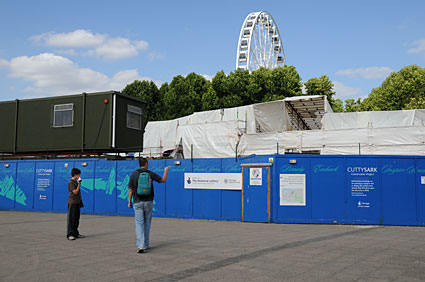
The covered up remains of the tea clipper  Cutty Sark which suffered a catastrophic fire in May 2007. Cutty Sark which suffered a catastrophic fire in May 2007.
 See 360º panorama See 360º panorama
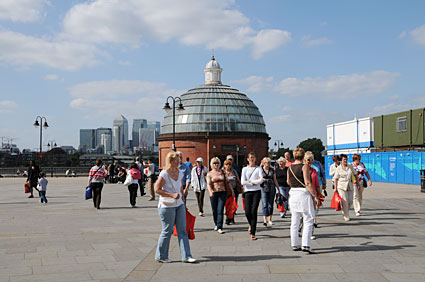
The southern entrance to the Greenwich foot tunnel, a pedestrian tunnel linking the London Borough of Greenwich with the London Borough of Tower Hamlets to the north.
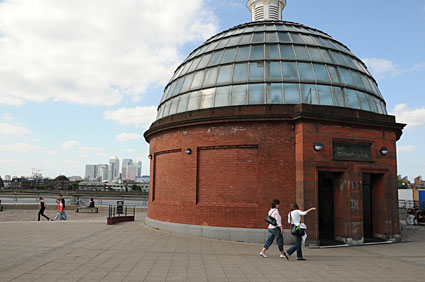
The tunnel was designed by civil engineer Sir Alexander Binnie for the London County Council, with John Cochrane & Co being contractors.
It was built to allow workers living on the south side of the Thames to reach their workplaces in the London docks and shipyards on the Isle of Dogs opposite, and replaced an earlier expensive - and sometimes unreliable - ferry service.
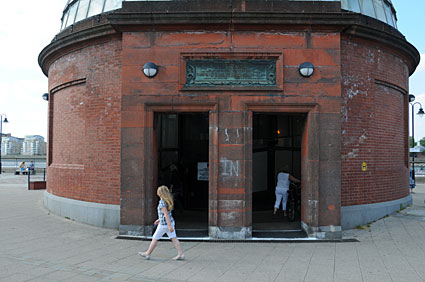
Work started in June 1899, with the tunnel opening just over three years later in 4 August 1902.
The distinctive domed entrance shafts house lifts and spiral staircases taking pedestrians to the sloping, tile-lined tunnel below via around 100 steps.
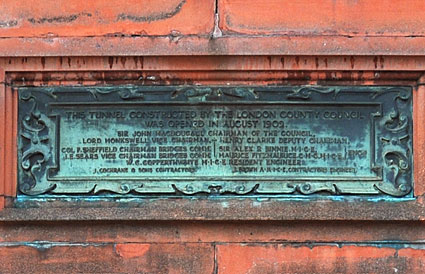
Plaque celebrating the opening.

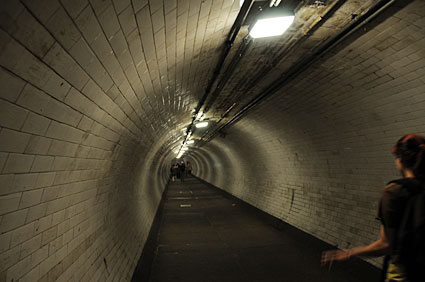
The cast-iron, concrete lined tunnel measures up at 370.2m (1,217 feet) long and 15.2m deep, with an internal diameter around 9 feet (3 m).
The depth and location of the tunnel ensures that it stays cool underground on even the hottest days.
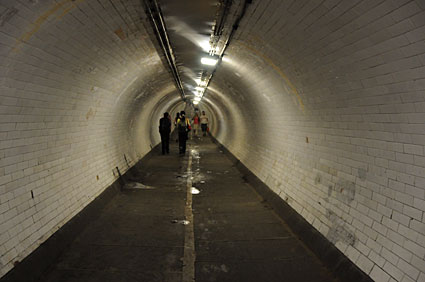
There's reckoned to be around 200,000 white glazed tiles lining the tunnel.
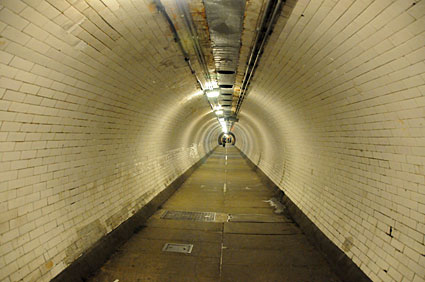
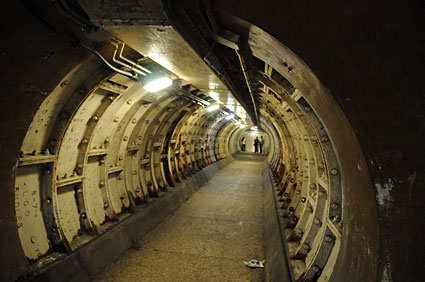
The northern end of the tunnel was damaged by World War II bombs, necessitating repairs that included the addition of a thick steel and concrete inner lining. You can see that this lining substantially reduces the diameter for several metres.
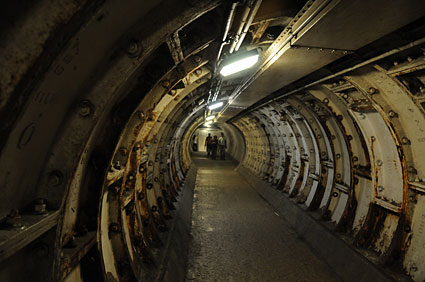
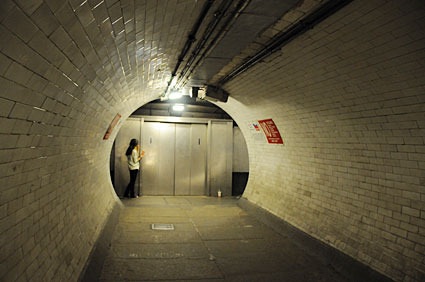
Entrance to the northern lift.
Classed as a public highway, the tunnel has to be kept open 24 hours a day, although the attendant-operated lifts are only in use between 7am to 7pm on weekdays and Saturdays, 10am - 5.30pm on Sundays.

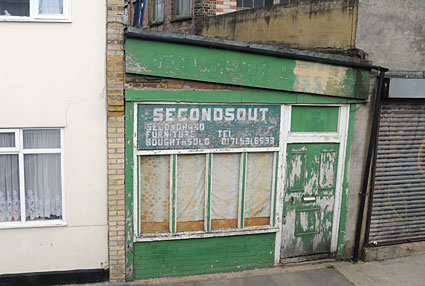
We got the bus to Canary Wharf, and passed this old second hand shop which looked like it had been closed for some time.
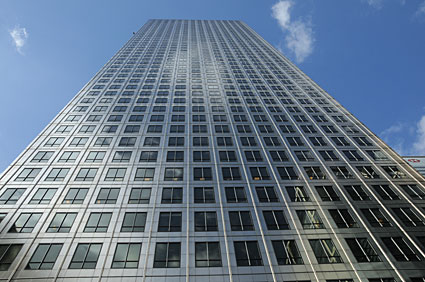
We alighted at the modern metropolis of Canary Wharf.
This is One Canada Square (also known as the Canary Wharf Tower) which is currently the tallest building in the UK at 235.1 metres (771 ft) above ground level - and the sixth tallest building in the European Union.
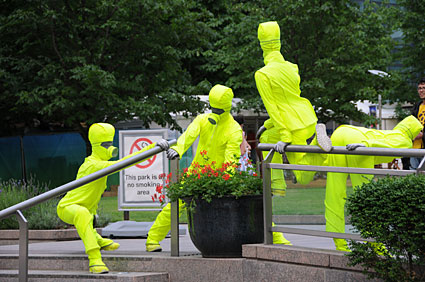
There was some kind of kerrr-azy arty event going on in Canada Square.
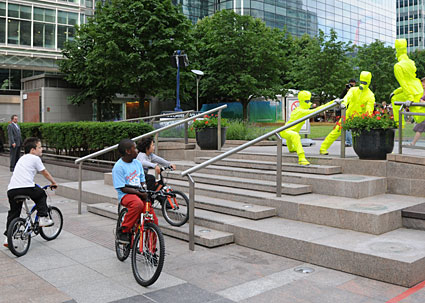
The kids were every bit as baffled as us about what these people in yellow were supposed to be.

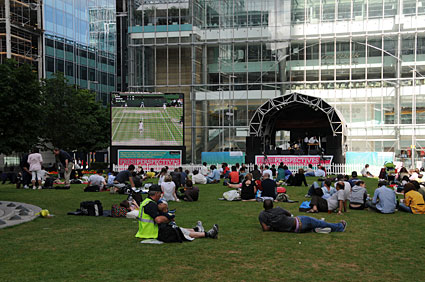
There was a live stage set up, but we saw no bands - only a huge TV screen showing Andy Murray playing at Wimbledon.
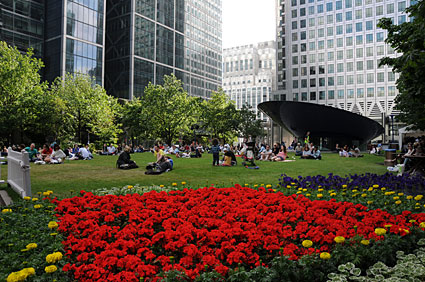
Canada Square in bloom.
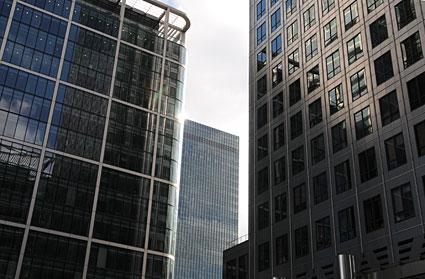
It's a bit like a mini-Manhattan!
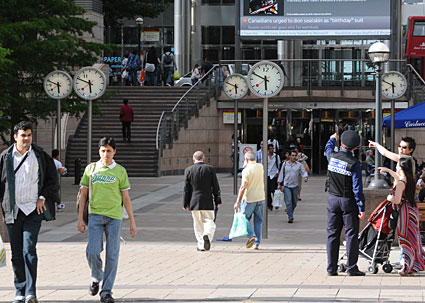
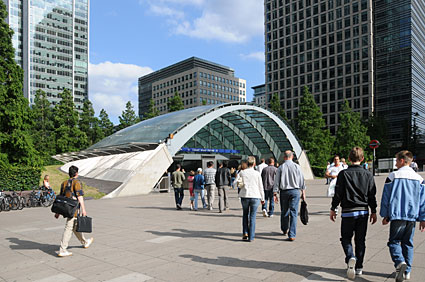
The unassuming street entrance to Canary Wharf tube station, which was was opened in September 1999 as part of the Jubilee Line Extension.
With over 41 million people trundling through the station every year, it's the busiest station on the London Underground outside of Central London.

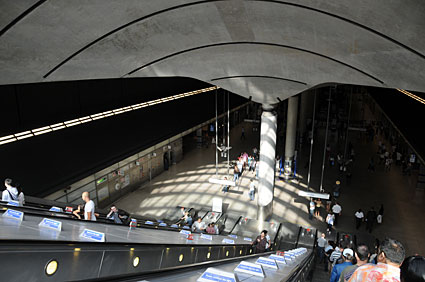
Designed by architect Sir Norman Foster, the 24 metres (78 feet) deep station site was constructed in the drained arm of a former dock.
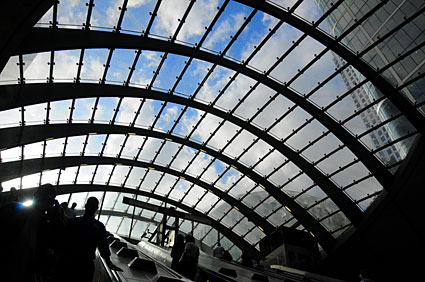
View from the escalators under the station canopy.
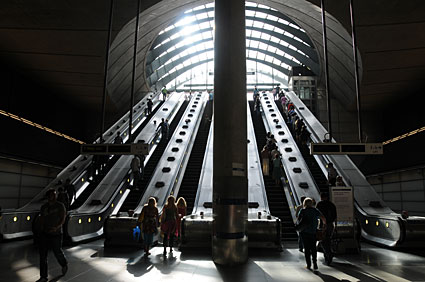
A view of the cathedral like entrance - time to get the tube back to Brixton!

« back to London homepage
|

